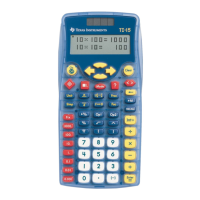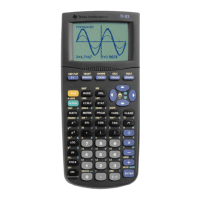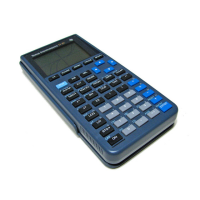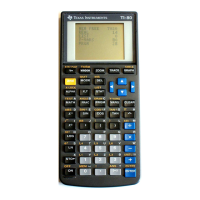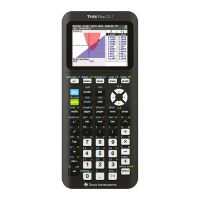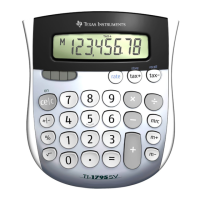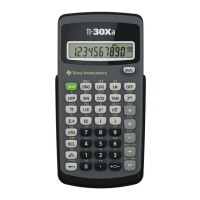Using Lists & Spreadsheet 579
Inverse t (invt) computes the inverse cumulative t-distribution
probability function specified by Degrees of Freedom, df, for a given area
under the curve.
This distribution is useful in determining the probability of an occurrence
of data in the area from 0 to x<1. This function is used when the
population mean and/or population standard deviation is not known.
c
2
Pdf (c
2
Pdf()) computes the probability density function (pdf) for
the c
2
(chi-square) distribution at a specified x value. df (degrees of
freedom) must be an integer > 0. The probability density function (pdf)
is:
This distribution is useful in determining the probability of the
occurrence of a given value from a population with a c
2
distribution. The
draw option is available when c
2
Pdf is invoked from a formula cell.
c
2
Cdf (c
2
Cdf()) computes the c
2
(chi-square) distribution probability
between
lowBound and upBound for the specified df (degrees of freedom).
You can click the Draw Shade area check box to shade the area between
the lower and upper bounds. Changes to the initial lowBound and
upBound automatically update the distribution.
This distribution is useful in determining the probability of the
occurrence of value within given boundaries of a population with a c
2
distribution.
F Pdf (F Pdf()) computes the probability density function (pdf) for the
F distribution at a specified
x value. numerator df (degrees of freedom)
and
denominator df must be integers > 0. The probability density function
(pdf) is:
This distribution is useful in determining the probability that two
samples have the same variance. The draw option is available when F Pdf
is invoked from a formula cell.
where
n = numerator degrees of freedom
d = denominator degrees of freedom
fx()
1
Γ df 2⁄()
--------------------
1/2()
df/2
x
df 21–⁄
e
x/2–
x 0≥,=
x()
Γ nd+()/2[]
Γ n/2()Γd/2()
----------------------------------
n
d
---
⎝⎠
⎛⎞
n/2
x
n/2 1–
1 nx/d+()
nd+()/2–
x 0≥,=

